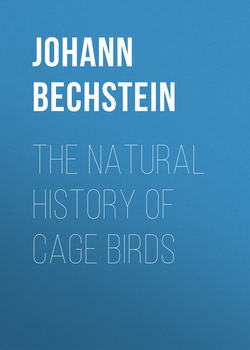Читать книгу The Natural History of Cage Birds - Bechstein Johann Matthäus - Страница 52
LARGE BEAKED BIRDS
THE BANKSIAN COCKATOO
ОглавлениеPsittacus Banksii, Linnæus; Le Kakatoes Noir, Buffon; Der Banksche Kakatu, Bechstein
This certainly is the handsomest, rarest, and most precious of all the cockatoos. It is as large as the red and blue maccaw, its length being from twenty-two to thirty inches. The beak is thick, yellowish, and black at the point; the iris red, and the feet black. Black is the prevailing colour of its plumage; the tuft is rather long, but in a state of tranquillity lies flat on the head, as in the preceding cockatoo; each feather has a yellowish spot exactly on the tip; the wing-coverts are also terminated with a similar spot.
Varieties. – Of this beautiful species there are several varieties.
1. Those with the beak lead-coloured; the tuft of a moderate size, black mixed with the yellow feathers; the throat yellow; the sides of the neck spotted with yellow and black; the tail as above; all the rest black, without any streaks on the under part of the body.
2. Those with the beak bluish grey, plumage olive, or black, with a yellowish tint on the sides of the head, but having no feather with a yellow tip. The belly of one colour, without streaks; tail as above. This may possibly be a young one.
3. Those with the beak raven-grey; the head, the neck, and the under part of the body of a dark dirty brown colour. The feathers on the top of the head and nape of the neck are bordered with olive: the upper part of the body, the wings and tail, of a brilliant black; the centre feathers of the latter are of one colour; the others scarlet in the middle, but without streaks. This is perhaps a female.
Observations. – This noble and handsome bird is still rather rare in England, and still more so in Germany. It may be found in many parts of New Holland; its motions resemble those of the common cockatoo and the manner of treating it is the same.
